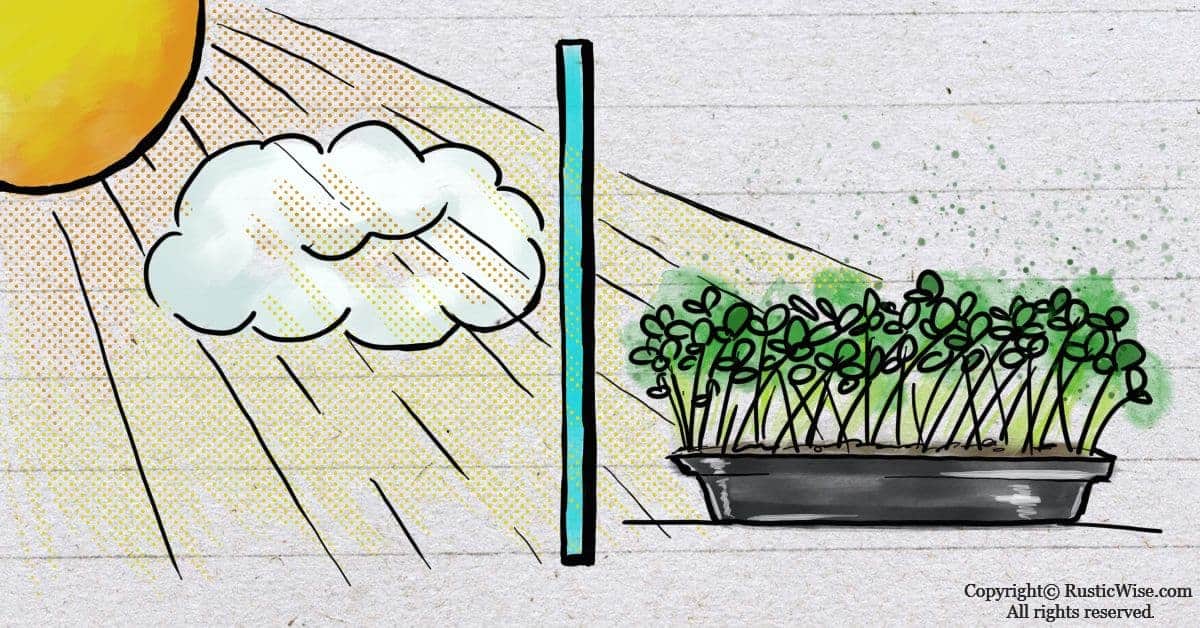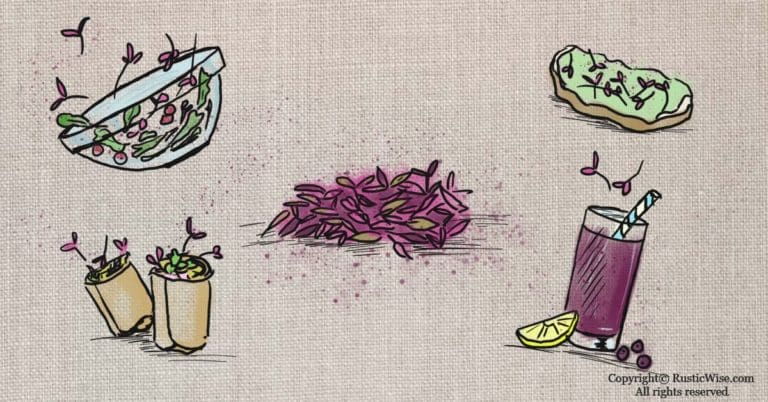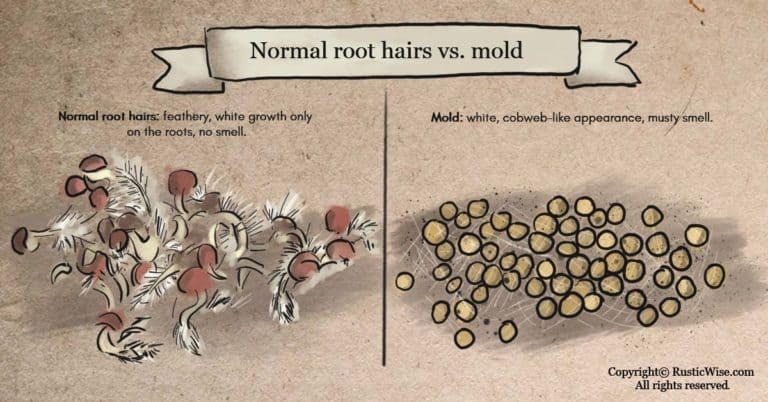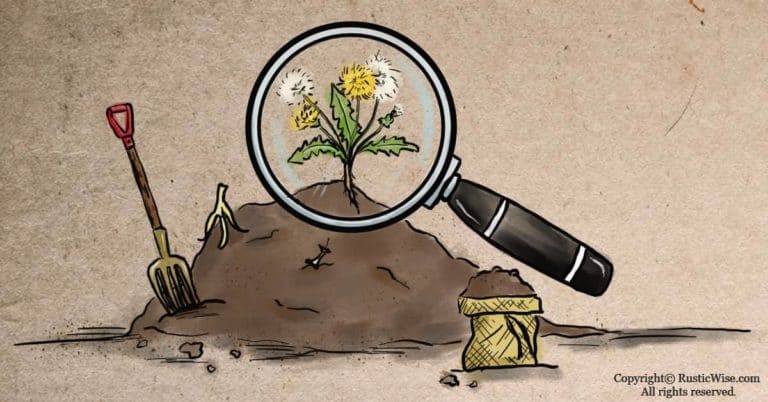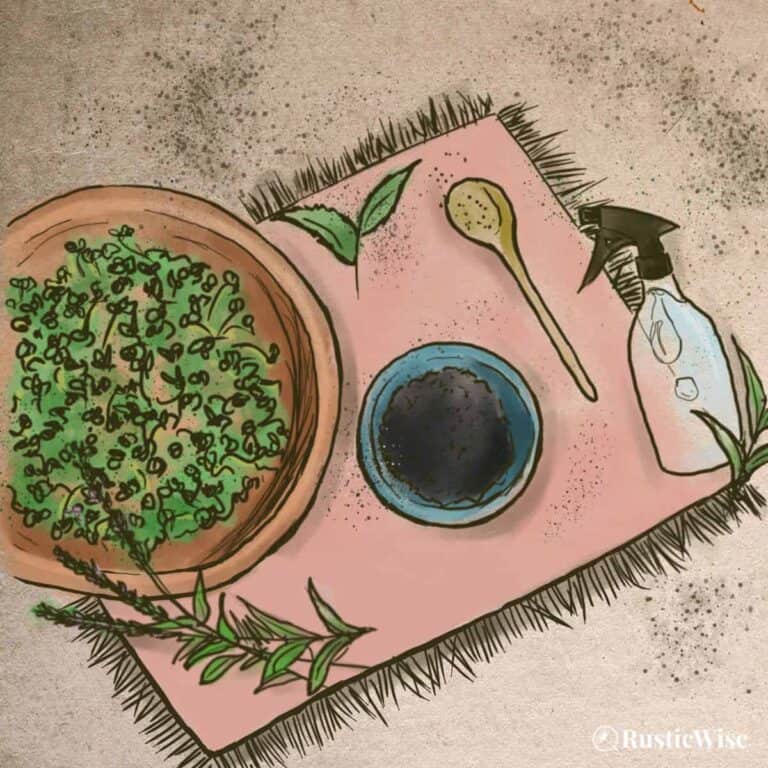Top 9 Microgreens To Grow in Indirect Light
RusticWise is supported by its readers. When you purchase through links on our site, we may earn an affiliate commission. As an Amazon Associate, we earn from qualifying purchases. Thank You!
One of the most important considerations when it comes to microgreens is lighting. While some varieties of microgreens require direct sunlight, there are some microgreens that do just fine in indirect light. We’ve rounded up the top microgreens to grow in indirect light.
While you could use artificial lighting, not everyone has the space nor budget to do so. If you live in a location with limited natural light, read on for tips and tricks to maximize your microgreen production and make the most of natural sunlight!
What exactly is indirect lighting?
First things first: all microgreens require some light to grow, whether it’s natural lighting or artificial. Light is a key component of photosynthesis, the process in which plants convert light, water, and air into energy or food (carbohydrates).
The term indirect light simply refers to an area which receives low to medium light which is sometimes shaded. For example, you would typically get indirect light if you placed your microgreen trays in front of north, east, or west-facing windows.
On the other hand, most south-facing windows receive some direct sunlight.
Let’s not confuse the term “indirect light” with “inadequate light.” Plants that get insufficient light often look “leggy” (meaning tall and thin stems that reach towards the sunlight, and an overall lack of foliage).
Microgreens that don’t receive enough light also look paler and are lacking the bright-green vibrancy that comes from chlorophyll.
And, not surprisingly, microgreens with less than adequate lighting take longer to grow.
How much light do microgreens need?
According to the book, Microgreen Garden: Indoor Grower’s Guide to Gourmet Greens by Mark Mathew Braunstein, microgreens need about 10 hours of light and 6 hours of darkness each day.
Many growers follow the “more is better” mantra when it comes to lighting. Some have indoor growing lights turned on 24 hours a day to try to maximize yield.
This isn’t necessary or beneficial, however. In fact, there is such a thing as too much light.
Microgreens benefit from several hours of darkness each day as this mimics the natural day and night cycles of nature. (And the example Mother Nature sets rarely leads gardeners astray.)
Time in the darkness helps plants to develop a stronger root system, metabolize sugars, and grow thicker and stronger stems and leaves.
Different seasons, different lighting
The time of year you happen to grow microgreens affects the lighting and temperature, even if you’re growing indoors.
If you’re growing microgreens indoors during the summer for example, you’ll benefit from warmer household temperature as well as brighter and longer hours of natural sunlight.
Growing a batch of microgreens in the dead of winter (especially if you live in a cold climate), results in lower and colder temperature, plus fewer hours of weaker sunlight.
Tip: While natural lighting might suffice during the summer for your microgreens, you may need to supplement natural sunlight with artificial lighting during the winter months.
Short grow cycles
While crops that grow to maturity may need more stringent light and nutrient requirements, remember that microgreens have very short grow cycles. Many micros are ready to harvest in less than 2 weeks.
Most varieties of microgreens germinate fine in the dark. And yes, while light is a basic requirement for growth, you don’t need to worry about it too much—especially if you’re just growing for yourself.
Just aim to get around 10 hours of light a day. Natural sunlight is always preferred, but a combination of natural and artificial light works well too.
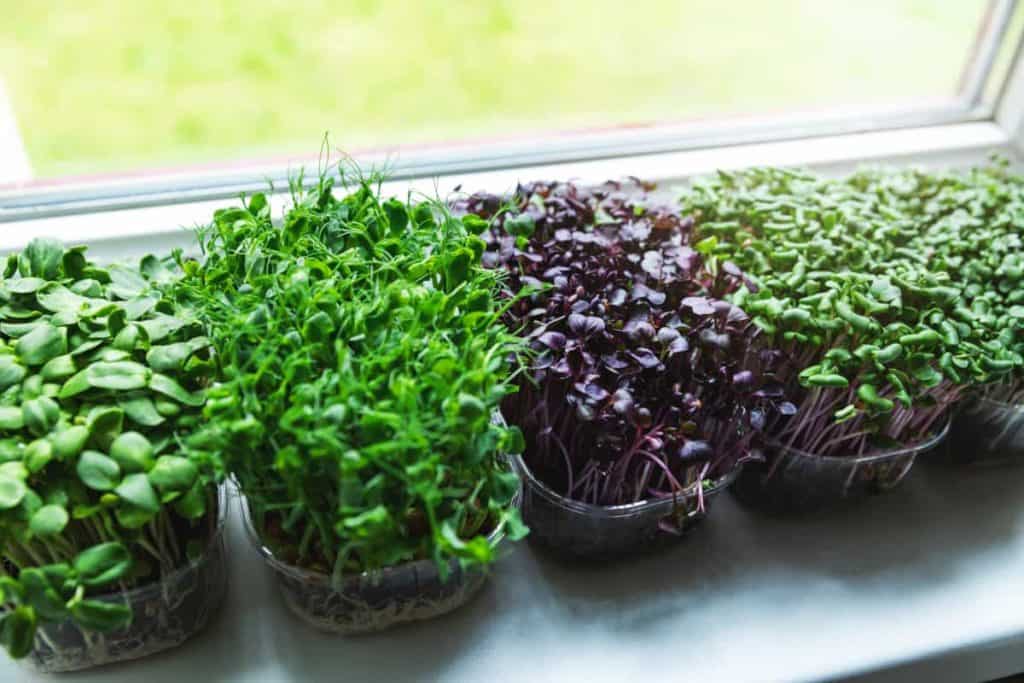
Top microgreens to grow in indirect light
Before going all-in on growing trays of microgreens, it’s important to research each variety and understand that each has a different growing requirement. You may notice below that many members of the Brassica family make the list of microgreens that do fine in indirect lighting (2).
Brassicas are typically a resilient bunch that thrive in a wider range of lighting and temperatures.
So, if you live in an building without ample natural light, you might want to try growing the following varieties of microgreens.
- Amaranth: An ancient grain-like microgreen with a sweet, nutty taste. Read how more about amaranth microgreens here.
- Arugula: Spicy microgreen with a peppery bite.
- Bok choy: A microgreen with a mild, cabbage-like flavor. Bok choy does fine even in partial shade.
- Chervil: A herb microgreen with an anise-like flavor and aroma.
- Cilantro: A tender microgreen that’s easy to grow, but slow growing. During its first week, it is fine with indirect lighting. However, during the second week, move to brighter lighting.
- Dill: Packed with a concentrated dill flavor, dill microgreens are a bit more challenging to grow. They are more difficult to germinate, and actually don’t need to be covered during germination phase—they do better with a bit of light to get things started.
- Most lettuce varieties: There are many types of lettuce microgreens to grow including romaine and iceberg. Mild flavored and tender, you can choose to let them grow larger to their “baby” leaf stage, or harvest earlier as micros. Some varieties like iceberg do well in cooler temperatures.
- Most mustard greens varieties: Most mustard greens thrive in warm conditions with adequate indirect lighting. The flavors of mustard greens varies widely ranging from mildly spicy, to wasabi-hot!
- Tatsoi: A type of Brassica also known as Japanese spinach, tatsoi has a mild, slightly spicy flavor suitable as a base salad green.
Tricks and tips for maximizing natural light
Large south-facing windows are not something everyone has access to. What do you do if you don’t have access to much natural sunlight?
Here are a couple of ideas on how to make the most of the natural light you do have:
A quick note about artificial grow lights
This article isn’t going to get into the nitty-gritty details of different grow lights, but here are a few tips from the University of Maryland Extension (UME):
- Whether you choose to use fluorescent light fixtures, or LEDs, choose lights with a light intensity (lumens rating) of 3,000+ and a color temperature rating which measures the brightness (Kelvin scale) of 5,000 to 6,500 (daylight).
- Remember to wipe off any dust or grime on your lights prior to using as this affects the light intensity.
Happy growing!
👉 Want to read more about plants that grow in low light? Check out 10 Best Indoor Hanging Plants for Low Light Environments.

References
- University of Minnesota Extension, Lighting for indoor plants and starting seeds, https://extension.umn.edu/planting-and-growing-guides/lighting-indoor-plants#factors-to-consider-when-you-evaluate-light-2651611. Accessed August 2021.
- Braunstein, Mark Matthew (2013). Microgreen Garden: Indoor Grower’s Guide to Gourmet Greens. Book Publishing Company. ISBN 13: 978-1-57067-294-1.
- University of Maryland Extension (UME), Maryland Grows Blog, Light Choices for Starting Plants Indoors, https://marylandgrows.umd.edu/2019/01/18/light-choices-for-starting-plants-indoors/. Accessed August 2021.

Author: Theresa Tesolin
Theresa is co-founder of RusticWise. She helps people unleash their inner DIY spirit by encouraging them to get dirty and make or grow something from scratch.

